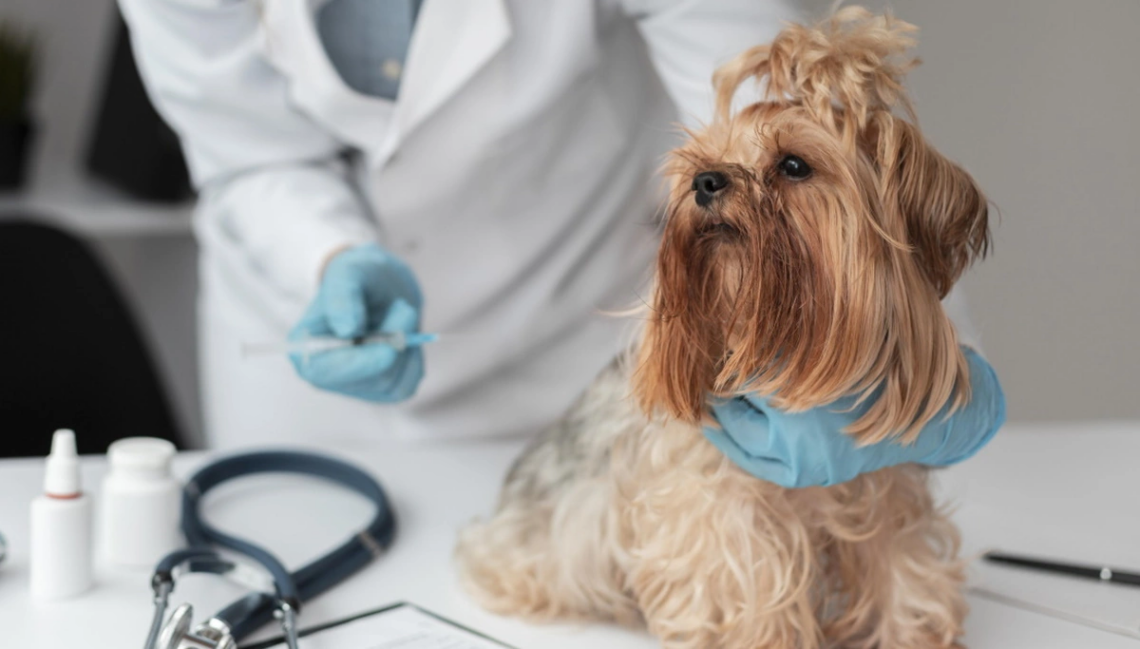(Original Article Published via RawFoodForPets.com)
Sweet cakes and peanut butter squares …
Diabetes (not just in cats and dogs) is a disease reaching epidemic proportions across the globe. Most cases in our pets are like what is called Type 2 diabetes in pet parents (humans), which means that weight (yes obese pets) and diet (those lovely sugar-loaded and coated McKibble and McCan) are major factors in the development and control of the disease. Diabetes affects how the body uses glucose, a sugar that is the bodys main source of fuel. As stated by Dr. Shawn Messonnier in his book titled “Natural Health Bible for Dogs and Cats“, diabetes mellitus is a common endocrine pancreatic disorder of cats and dogs. The incidence of diabetes in cats and dogs is reported to be anywhere from 1 in 100 to 1 in 500 pets.
If you read the veterinary medical journals, you will notice that the exact causes for canine and feline diabetes is not yet known but certain risk factors point to a high carbohydrate diet (yes, McKibble and McCan), obesity and old age. The current situation is further exacerbated when we look at our masters, as our masters are actually obligatory carnivores.
When a cat is eating a high carbohydrate food such as McKibble, their blood sugar levels experience frequent spikes because carbohydrates releases sugar much faster and readily than proteins or fats. Combined with having free access to a bowl of sugar-coated biscuits throughout the day instead of only eating at designated meal times adds to this effect and increases the risk of diabetes to his master and cause unnecessary stress on their pancreas.
The pancreas is a long, flat gland in your and your pets belly that helps your body digest food. It also makes insulin. Insulin is the key that opens the doors to the cells of the body to let glucose into those cells as fuel. However, if the body cannot make insulin, or the insulin does not work in the body like it should, then the glucose cannot get into cells normally, so they stay in the blood stream resulting in the blood sugar levels getting too high. And this overdose of sugar in the blood makes us and our pets sick.
The symptoms of diabetes can develop gradually and without notice, and typically include the following:
- Increased urination and increased thirst. These two signs are hallmarks of a diabetic condition, so you will want to watch closely for them, especially as your pet ages. Unfortunately, increased thirst and urine output are also signs of other serious health problems, so regardless of the age or condition of your dog or cat, you should make an appointment with your veterinarian (and bring a urine sample) if you notice these symptoms.
- Increased appetite. Your pet might grow hungrier over time because the amino acids and glucose needed inside the cells are not getting there, or are not being used appropriately.
- Weight loss. When the cells of your pets body are being starved of essential nutrients, the result is often an increase in appetite. But because the energy from food is not being used efficiently by the bodys cells, your pet can lose weight even though he is taking in more calories.
- Lack of energy and increased need for sleep. When the cells of your pets body are deprived of blood sugar, he is apt to show a general lack of desire to run, take a walk with you, or engage in play.
- Vision problems. Another symptom of diabetes in companion animals is blindness, which is seen primarily in dogs, but cats can also develop blindness as a result of diabetic cataracts.
- Weakness in rear limbs (cats only). This symptom is unique to kitties with diabetes. It is called the plantigrade stance. Instead of walking high up on the pads of his feet, which is how cats normally walk, a cat with plantigrade stance will drop his hind quarters low and actually walk on his back ankles. Fortunately, this symptom can be reversed once your kittys diabetes is under control.
- Urinary tract infections. It is not at all uncommon for diabetic dogs and cats to acquire secondary urinary tract infections. This happens because the more sugar there is in the urine, the greater the likelihood that bacteria will grow in your pets bladder.
- Kidney failure. Kidney failure, especially in cats, is also a common secondary symptom of diabetes. Often the first diagnosis for a diabetic kitty is chronic renal insufficiency or acute kidney problems. The sugar that is meant to be retained in your pets bloodstream spills over into the urine and is very damaging to the kidneys.
Although diagnosing diabetes is not demanding, treating it certainly is. That said, it is a treatable disease in dogs and most diabetic dogs can lead very high-quality lives. Dietary therapy is useful in both dogs and cats with diabetes. Most diabetic dogs require insulin as they have type I diabetes. Many cats may not require insulin, as they typically have type II diabetes.
While not scientifically proven, some holistic or integrated veterinarians believe that years of feeding corn-based foods to cats, which amounts to feeding a high carb food to a true carnivore, may be contributing to the high incidence of diabetes in cats.
The Basics of Diabetes
Understanding how diet plays a role in the management of diabetes requires some basic information regarding the relationship between food (not feed), blood sugar levels, and the hormone insulin. Insulin is produced by special cells in the pancreas. It is secreted into the bloodstream when blood sugar levels rise, for instance after a meal. Insulin allows sugar to enter cells where it is used to fuel biological processes or converted into other substances or stored for later use.
There are two types of diabetes. Type 1 and Type 2. Type 2 is the more common form in both pet parents and pets.
- Type 1 occurs when the beta cells of the pancreas are not able to produce enough insulin;
- Type 2 is characterized by two problems. The first, as in Type 1, is a diminished ability of the pancreas to secrete insulin. The second issue is one of insulin resistance. In other words, the receptors on the cell wall that would normally open the door to the cell to let the glucose in when insulin “knocks”, stop “listening” to the insulin. The cells “resist” the signal that the circulating insulin is sending, and the glucose is not transferred to the inside of the cell, resulting in an elevated blood glucose (hyperglycemia) and cellular “starvation”. The elevated blood glucose, in turn, sends a signal to the pancreas telling it to secrete more insulin. The elevated insulin may somewhat override the insulin resistance resulting in more glucose entering the cells, but eventually the pancreas can become exhausted or wears out.
Glucose toxicity results from chronic hyperglycemia. Glucose toxicity wreaks havoc on the entire body – especially the pancreas and its insulin-producing cells. A vicious cycle then ensues as the insulin-producing cells are damaged resulting in less insulin being produced. When our mutts, pups, masters and nobles suffer from this, it is a race that nobody can ever win.
The Role of Obesity in Diabetes
One of the most important factors that leads to diabetes is obesity. The term fat cat has never been more relevant. Fat cells produce hormones that male the body less responsive to insulin. The more fat that is present, the more of these hormones are produced.
Many cases of obesity in our pets could be prevented if we do not over-feed them and they remain slim and trim. In some cases, weight loss can even lead to remission in your pets diabetes if treatment begins early in the course of the disease. In other words, pets and fat cats who initially need insulin injections may be able to be weaned off of them if they lose sufficient amount of weight.
Can We Treat Diabetes in Cats and Dogs with Food?
Diet, diet and diet. A real, carb free diet. Not all carbohydrates are created equal, but it is safe to say that obligate carnivores – especially diabetic ones – do not benefit from carbs at a level above what would be in their natural diet regardless of the type. However, carbohydrates are characterized by their Glycemic Index (GI) and their Glycemic Load (GL), which are measurements that reflect how high and how rapidly a specific carb causes a rise in blood glucose when ingested and the overall impact that particular carb has on the diabetic state. The higher the GI/GL of a carbohydrate, the worse the result will be for a diabetic patient, although GI/GL of various ingredients has not been studied in cats and dogs like it has been in humans.
The GI and GL values of different food sources are very important to consider for pet parents trying to manage their own diabetes. However, we prefer not to concentrate on these values specifically for cats, because then it sounds like there may be good carbs versus bad carbs. The bottom line is that pet parents are designed to utilize carbs whereas cats are not. Not even dogs. What we can say is that some carbs, such as the grain flours, are worse (higher GI/GL) than other carbs, but ideally, we must strive to keep the carb level of the feline diet at a level which would be found in nature.
- McKibble: We do not endorse any dry kibble feed for cats or dogs. As our name suggests, we believe that cats and dogs are carnivores and cats go a step further to be obligate carnivores. McKibble must use some kind of starch or carbohydrate to bind the ingredients together to form a kibble during the production process. Because of this, even the most grain-free and high protein kibble product inevitably have carbohydrates. Keep in mind that so-called Prescription Diets that are only sold at vets that read for diabetic cats or for diabetic dogs also contain a high amount of carbohydrates!
- McCan: Canned foods come in various quality levels. Lower quality canned foods will have a substantial amount of carbohydrates or starches in the form of grains such as barley, brown rice, carrageenan, guar gum, or potatoes. Higher quality McCan will have higher protein, low carbohydrates and use peas as the starch source but it still has enough carbohydrates to make a difference (this includes the prescription diets that are available at veterinary offices). There are a few excellent brands that have zero carbohydrates.
- Biologically Species Appropriate Real Food: Raw food for pets will have zero or the least amount of carbohydrates compared to other mediums of feed. We believe that in nature, no cats would have ever suffered from diabetes since they would not have been eating foods that are high in carbohydrates at all! They would have been hunting their prey and eating it whole including the preys skin, bones, organs, and of course, the meat.
–
Please keep in mind that:
- Cats are obligate carnivores and a high carbohydrate diet is detrimental to their health, in general, and will make diabetic regulation much more difficult and diabetic remission (no longer needing insulin) almost impossible;
- High fiber diets run counter to a cats natural diet and research has shown that high fiber diets do not favorably impact a diabetic cat like that observed in a diabetic dog or human.
How Does Real and Raw Food Help manage Diabetes in Cats and Dogs?
Raw fooding helps cats and dogs by:
- Helping them stay hydrated – intracellular moisture of raw meat is better absorbed than drinking water by cats. Urinary Tract Infections and other Kidneys or Bladder related problems are mostly due to dehydration. Even if you feel that your cat drinks enough of water, it is not enough;
- Providing them with naturally balanced nutrients by eating organs such as heart, liver, tripe, etc;
- Cleaning their teeth naturally – as raw meat has virtually no carbohydrates, which is one of most attracting thing for gingivitis and plaque causing bacteria, teeth stays cleaner;
- Promoting a healthier digestive system by being more easily digestible compared to dry kibble food or canned foods;
- Lowering the risk of developing a food allergy – as kibble and canned foods are cooked at high temperatures, the protein strands of the meat changes form while being heated and increases the chances of the immune system mistaking it for harmful pathogens and triggering an allergic response;
- Making it easier to control weight – since a raw food diet is already a zero to low carbohydrate diet, it is much easier to manage weight gain in cats (and dogs!) than with kibble or canned diets.
Switching your pet to real food
A non-diabetic cat can very safely handle the tough love 12-18 hours period of time without food that is often necessary to get them to change their diet, but this does not apply to a diabetic cat. Switching a stubborn diabetic cat can be more difficult. It is not impossible, but the process does have some complicating factors.
With a stubborn cat that is a dry food addict, approach the diet transition slowly and with a high dose of patience. For cats that like canned food but are still eating a 100% dry food diet, the transition can proceed much more rapidly if you monitor the blood glucose and the insulin is being adequately adjusted downward.
If your cat is already on insulin, the safest way to implement a diet change is to incorporate home testing into your management protocol.
Giving a full dose of insulin to a cat that is not eating can also result in life-threatening hypoglycemia. The goal is to get your cat off of dry food and on to a 100 percent real food diet but if your cat is on insulin, this must be done carefully – especially if the cat refuses to eat canned or real food.
You also need to discuss any diet change with your veterinarian but be aware that many vets underestimate the degree to which the insulin dosage needs to be lowered when a low-carb diet is implemented. This puts your master at significant risk for life-threatening hypoglycemia.
Articles and Videos
The following links are to articles and web sites that will provide more information on the topic.
- The carnivore connection to nutrition in cats, Dr Debra Zoran (PDF);
- Feline Diabetes and Obesity: The Preventable Epidemics, Dr Elizabeth Hodgkins (Blog);
- Does a low-carb diet increase the risk of ketones? Dr Elizabeth Hodgkins (Blog);
- Feline Diabetes, Dr Lisa Pierson (CatInfo);
- Diabetes in Dogs – Treatment and Prevention – Holistic Approach, Dr Peter Dobias (Blog).
- Cats and Carbohydrates: The Carnivore Fantasy? (PubMED)
- Preventing and Treating Canine Diabetes (The Bark);
- Canine Diabetes: Prevention And Treatment (Dogs Naturally Magazine);
- Treating Diabetes Holistically (Natural Pet);
- Canine and Feline Diabetes Mellitus: Nature or Nurture? by Jacquie S. Rand, Linda M. Fleeman, Heidi A. Farrow, Delisa J. Appleton, and Rose Lederer from Centre for Companion Animal Health, School of Veterinary Science, The University of Queensland, Brisbane 4072, Australia (Nutrition.Org);
Dr Judy Morgan discuss Helping Diabetes through Pet Foods
Research
- Bruyette D. Diabetes Mellitus in Dogs and Cats. MSD. 2000. https://www.msdvetmanual.com/endocrine-system/the-pancreas/diabetes-mellitus-in-dogs-and-cats.





